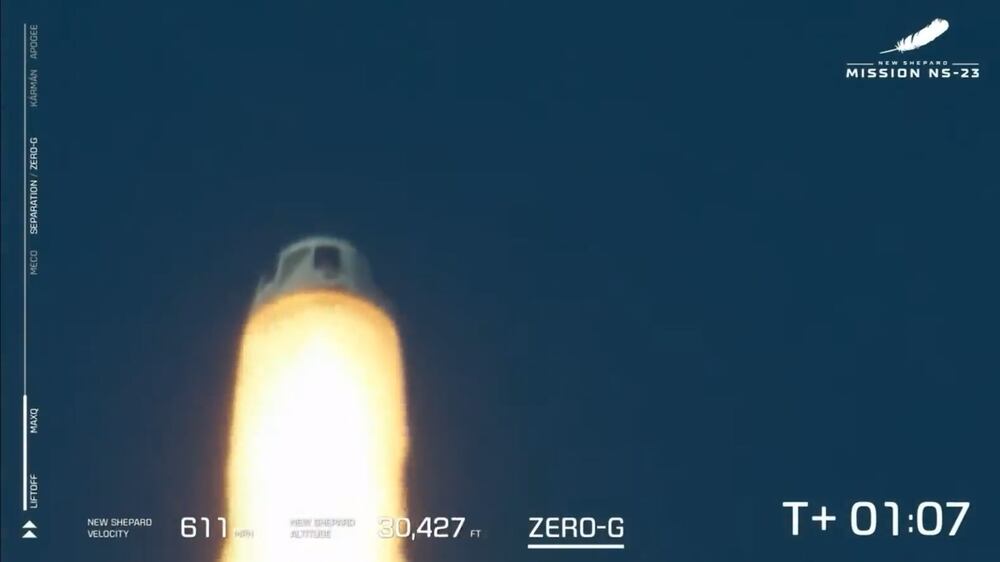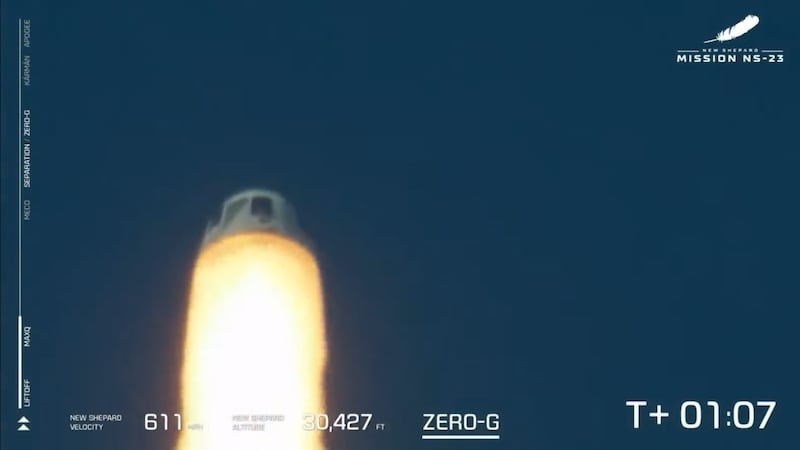Blue Origin has blamed an overheated engine nozzle for the failure of one of its rockets last year.
An uncrewed mission was aborted mid-flight in September after its rocket booster experienced an anomaly only one minute after it took off from a West Texas desert.
An investigation by the company, owned by billionaire Jeff Bezos, has revealed that the problem was because of a thermo-structural failure of the engine nozzle.
This caused the nozzle to overheat and then the crew capsule escape system activated.
No passengers were on board the NS-23 mission, which was carrying 36 payloads from schools, research institutions and pupils around the world.
“The crew capsule escape system worked as designed, bringing the capsule and its payloads to a safe landing at Launch Site One with no damage,” Blue Origin said in a statement on Friday.
Unmanned Blue Origin rocket crashes

Even though this was a cargo-only flight, the space tourism company has launched 32 people on its suborbital flights so far.
Flights were grounded after the incident and the Federal Aviation Administration launched an investigation.
Blue Origin hopes to return to flight soon with the internal investigation report now submitted to the FAA, but the authority will have to give the green light before they can resume operations.
The company said that it has made a few design changes to improve the rocket.
“Blue Origin is implementing corrective actions, including design changes to the combustion chamber and operating parameters, which have reduced engine nozzle bulk and hot-streak temperatures,” the company said.
“Additional design changes to the nozzle have improved structural performance under thermal and dynamic loads.”
Blue Origin’s space tourism flights — ones with passengers on board — offer a 10-minute experience.
Once the spacecraft separates from the booster, it soars 106 kilometres above the ground, bringing the passengers views of Earth against the darkness of space.
The reusable booster lands back at the launch site.
The capsule then descends towards the Texas desert under three parachutes and retro engines, bringing the passengers safely back to the ground.
Blue Origin’s competitor Virgin Galactic had also hoped to launch space tourism flights.
Company founder Sir Richard Branson flew on the first flight in 2020, but no flights have taken off since.
It is expected they would restart later this year.







